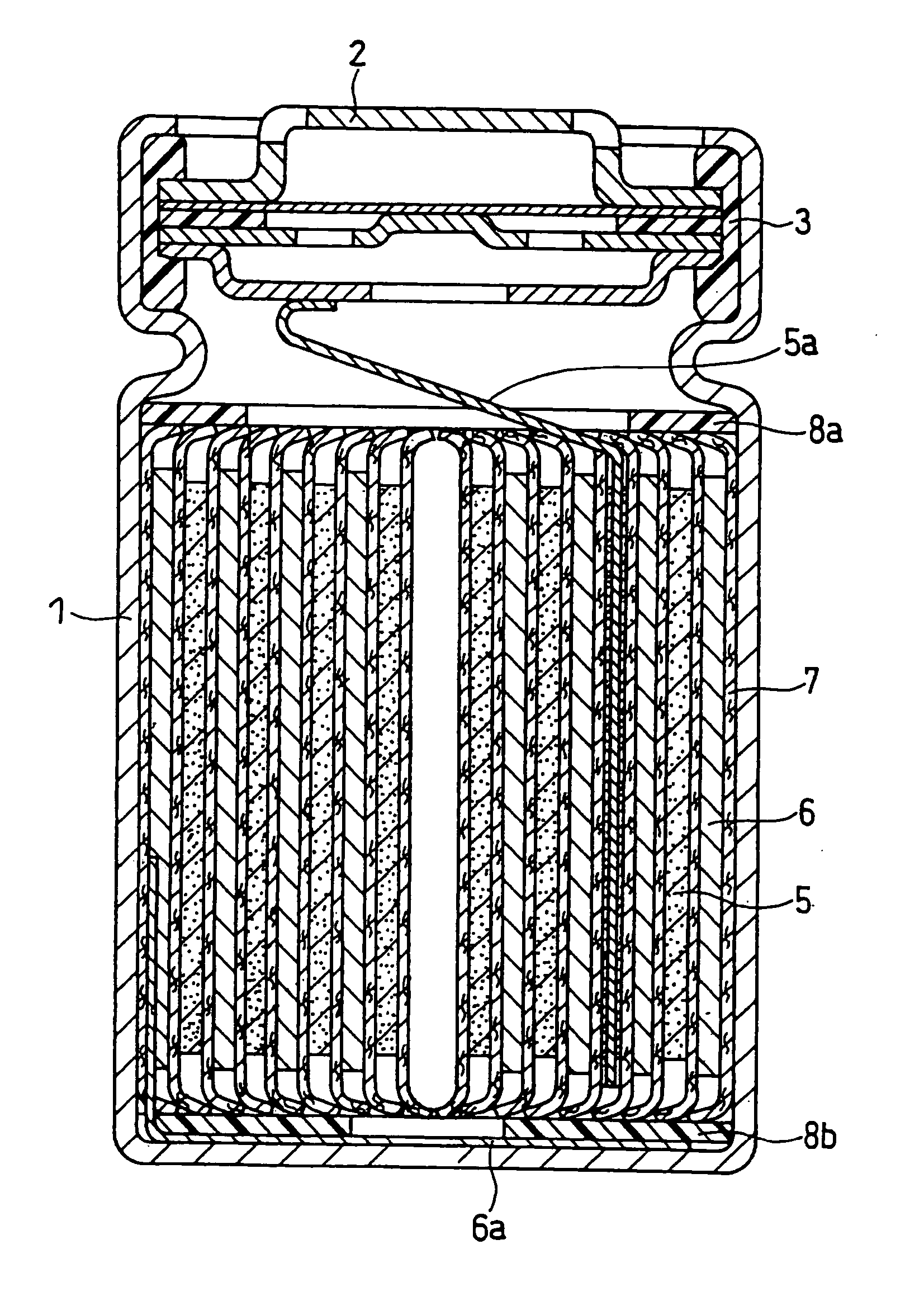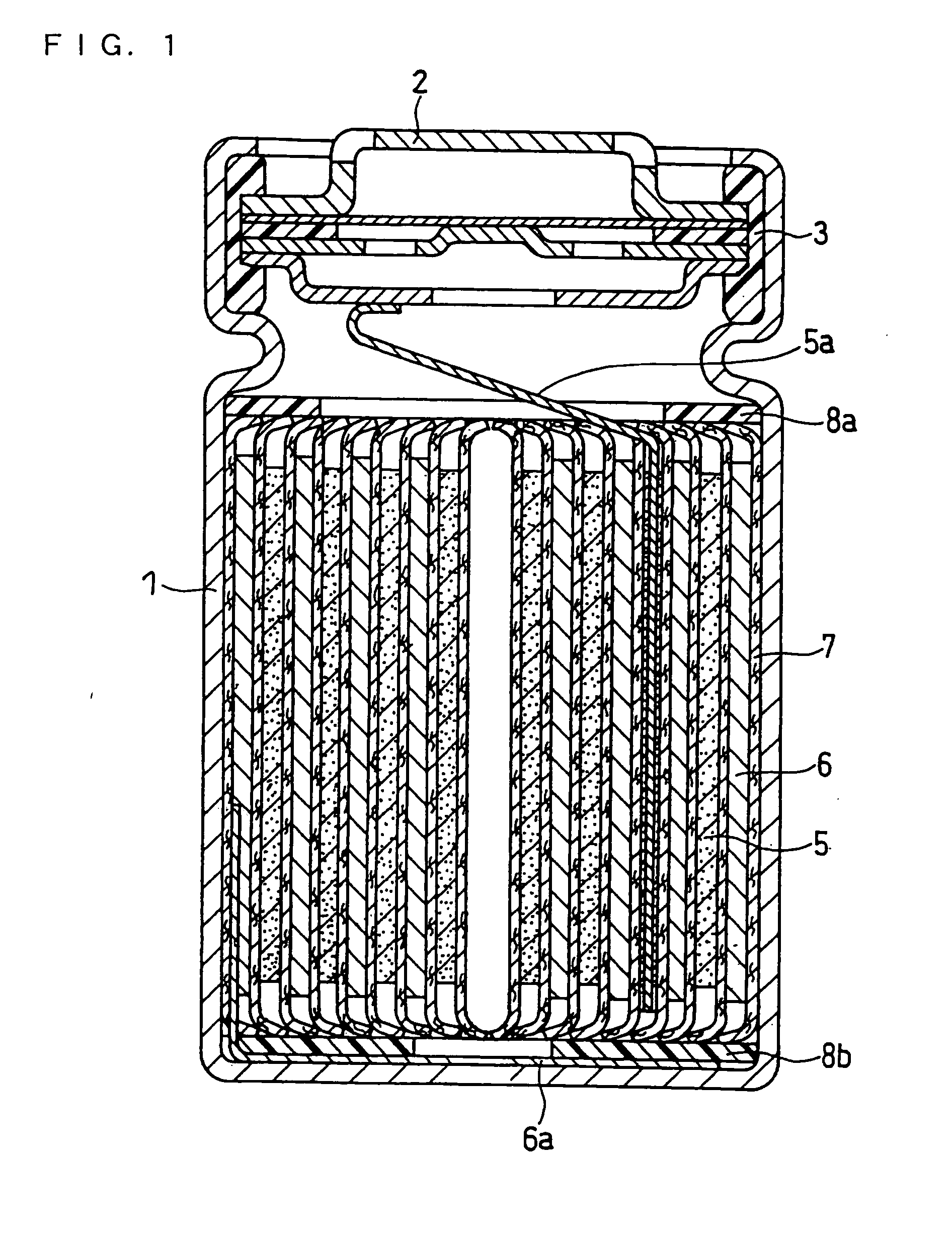Lithium Ion Secondary Battery
- Summary
- Abstract
- Description
- Claims
- Application Information
AI Technical Summary
Benefits of technology
Problems solved by technology
Method used
Image
Examples
example 1
Example Battery A1
(1) Synthesis of Lithium Composite Oxide
[0079] Nickel sulfate, cobalt sulfate and aluminum sulfate were mixed such that the molar ratio of Ni atoms, Co atoms and Al atoms was 80:15:5. This mixture in an amount of 3.2 kg was dissolved in 10 L of water to obtain a raw material solution. To the raw material solution, 400 g of sodium hydroxide was added and a precipitate was produced. The precipitate was sufficiently washed with water, and dried to obtain a coprecipitated hydroxide.
[0080] The obtained Ni—Co—Al coprecipitated hydroxide in an amount of 3 kg was mixed with 784 g of lithium hydroxide, and the mixture was calcined at a synthesis temperature of 750° C. in an atmosphere with an oxygen partial pressure of 0.5 atmospheres for 10 hours. As a result, a Ni—Co—Al lithium composite oxide (LiNi0.8Cu0.15Al0.05O2) having an average particle size of 12 μm and containing Co and Al as the element M was obtained.
(2) Synthesis of Active Material Particles
First Step
[...
PUM
 Login to View More
Login to View More Abstract
Description
Claims
Application Information
 Login to View More
Login to View More - R&D
- Intellectual Property
- Life Sciences
- Materials
- Tech Scout
- Unparalleled Data Quality
- Higher Quality Content
- 60% Fewer Hallucinations
Browse by: Latest US Patents, China's latest patents, Technical Efficacy Thesaurus, Application Domain, Technology Topic, Popular Technical Reports.
© 2025 PatSnap. All rights reserved.Legal|Privacy policy|Modern Slavery Act Transparency Statement|Sitemap|About US| Contact US: help@patsnap.com


